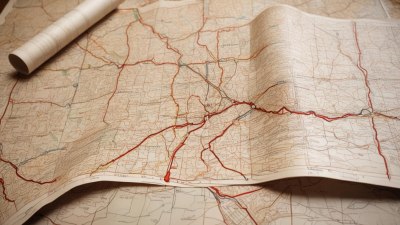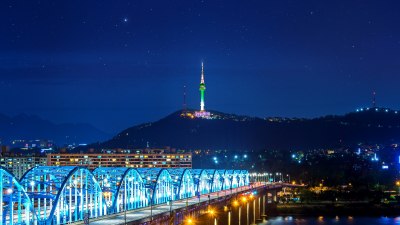Distances Collapse if You Travel Slowly Enough
Explore how slow travel influences perception of distances based on physics and relativity.

Image created with Flux Schnell
Throughout the history of physics, one of the most intriguing aspects has been the relationship between speed and distance, particularly as described by the theory of relativity. This theory, formulated by Albert Einstein in the early 20th century, fundamentally altered our understanding of space, time, and how objects interact in the cosmos. At its core, it suggests that time and space are not absolute, but relative to the observer's state of motion. When we consider how distances behave, an intriguing phenomenon arises — one that suggests distances can effectively 'collapse' under certain conditions, particularly when an object or observer travels slowly. This article seeks to unpack the complexities of this concept, examining the physics behind relativity, the implications of slow speeds, and the fascinating ways in which our perception of distance can be altered, hence revealing a nuanced understanding of this physical reality.
The Fundamentals of Relativity
The theory of relativity comprises two key components: special relativity and general relativity. Special relativity, introduced in 1905, deals primarily with observers moving at uniform speeds. It presents two essential postulates: the laws of physics remain invariant (identical) in all inertial frames of reference, and the speed of light is a constant (approximately 299,792 kilometers per second) regardless of the relative motion of the source and the observer. General relativity, proposed in 1915, expands these principles to include acceleration and gravity, suggesting that massive objects curve spacetime, thus affecting how distances and times are perceived near them. Within these frameworks, the velocity of an object has profound implications for how we perceive distances traversed over a given period.
Understanding Distance and Speed
To grasp how distances appear to collapse under low-speed travel, we first need to consider how distance, time, and speed interrelate. Mathematically, distance is calculated using the formula: distance = speed × time. While this formula holds true in day-to-day scenarios, relativity introduces significant modifications that challenge our intuitive understandings. For example, as an object approaches the speed of light, time dilates (it slows down relative to an observer), and length contracts (the object appears shorter along the direction of motion). However, what happens when the speed is significantly slower than the speed of light? The effects become interestingly paradoxical.
Perception of Distances at Slow Speeds
When we consider travel at practical speeds — such as those familiar to humanity, like walking, driving, or flying — these vehicles produce effects on distance measurements that are relatively negligible compared to light speed. However, one can argue that at slower speeds, the perception of distance could change due to a variety of factors: the frame of reference, relative motion, or even psychological aspects. For instance, if a person walks 1 kilometer over a period of 15 minutes, the speed is far less than that of a car traveling at 100 kilometers per hour. Yet, not just the physical distance but the psychological experience alters the individual's perception of this distance. The slower one travels, the more tangible the surroundings become, the distances feel 'closer.' With the world unfolding gradually, one might experience a mental 'collapse' of distance in sensation.
Quantifying Perceived Distance Collapse
While the mathematical basis of relativity requires high velocities to experience noticeable changes, perception can be influenced even at lower speeds. In a thought experiment, consider two observers: one moving at a leisurely stroll and the other in a high-speed vehicle. Imagine that both observers are tasked with estimating the distance to a landmark such as a mountain. The slow traveler, absorbing the scenery, might perceive the mountain as more approachable due to the gradual unfolding of sensory information. Meanwhile, the fast traveler may view the mountain as distant and abstract due to rapid processing and diminished engagement with the environment. Herein lies a crucial psychological component validated by neuroscience — our brains process spatial relationships differently based on our speed of movement, leading to a subjective 'collapse' of distance.
The Role of Frame of Reference
The observer's frame of reference is essential to understanding how distances might collapse when moving slowly. According to Einstein's principles, the relationship between distance and time depends on the relative motion between observer and object. In a scenario where one moves at a relatively insignificant speed compared to light, 'time dilation' and 'length contraction' effects become virtually imperceptible, yet the perception of distances travels through the lens of familiarity, context, and emotional engagement. This linkage between frame of reference and physical motion becomes starkly evident in comparative experiences. A child’s perspective while riding a bike through a city can evoke a sense of vastness or closeness depending on their height and speed — elements that alter spatial awareness significantly.
Empirical Observations and Psychological Effects
Various studies on perception and spatial awareness reveal how slow movement can affect our understanding of distance. Psychological experiments using virtual realities and landscapes have shown that as individuals engage with their environments at slower paces, spatial perception alters. As human beings, we tend to process and encode memories of travel differently based on our motion. Thus, two individuals moving through the same landscape can arrive at diverging interpretations and emotional resonances, altering their perceived distances in reality. Factors such as speed, interaction with the environment, and the type of engagement ultimately contribute to the calculus of perceived distance. Empirical evidence backs the idea that slower speeds encourage greater attentiveness and sensory interactions — leading to a 'collapse' of perceived distances as we engage more tangibly with our environment.
Technological Advancements and Slow Travel
In an increasingly fast-paced world dominated by technology and instant gratification, there is a growing trend toward slow travel. This concept embraces the idea of savoring experiences, valuing the journey, and reducing the tempo of life. In practice, slow travel might mean taking a train instead of a plane or exploring an area on foot rather than driving at high speeds. This paradigm shift toward slow-paced exploration allows travelers to develop deeper connections with their surroundings, enhancing the sense of intimacy with distances traversed. The result is a personal experience akin to 'distance collapse' where a traveler can explore nuances deeply, uncover local stories, savor flavors, and appreciate cultures. As we engage with the world around us, our perceptual lenses are enriched by our slower engagement, leading to the experience that distances, while geographically unchanged, become emotionally and psychologically more approachable.
Philosophical Implications of Travel and Distance
The exploration of distance through slow travel leads us into philosophical debates about the essence of reality, perception, and experience. If we accept that distances can collapse based on our motion and interaction with the world, how do we redefine distance beyond pure measurements? How do we integrate our psychological experiences into our understanding of distance? Philosophers, thinkers, and scientists continue to grapple with these questions, often converging on a shared realization that the universe is not merely a physical space, but also a tapestry woven together by perceptions, interactions, and the journeys we undertake. This woven experience could illustrate that the framework of reality is shaped not only by physical distances but also by how we engage with them — transcending conventional understanding to incorporate subjective experiences.
Embracing the Dance of Distances
Ultimately, the proposition that distances collapse when traveling slowly enough underscores a vast interplay of physics, perception, and engagement with the world. While relativity teaches us about the nature of distance and time as affected by velocity, the discussions surrounding slow travel delineate an engaging exploration into how our experiences shape our understanding of distances. Human interactions, empirical observations, and evolving perspectives reveal a nuanced dance between speed and perception, highlighting that distance may not simply be a metric of measurement, but a relational experience shaped by our experiences. The next time you find yourself immersed in a journey - whether walking through a city or savoring a hike in nature — consider how the distances may shift, not merely in the physical realm, but also within your consciousness.











